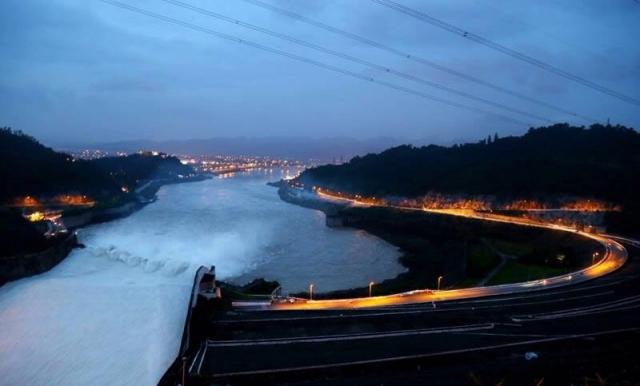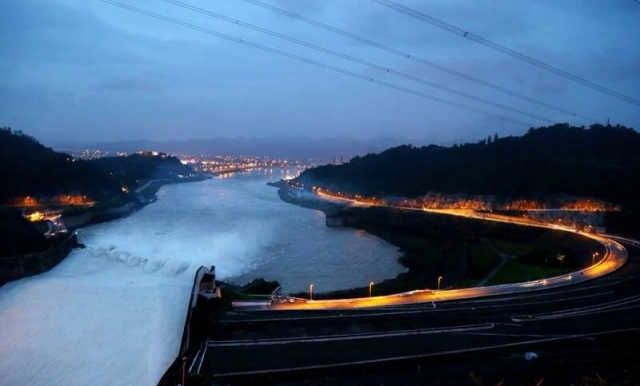



Hoa Binh Hydropower Plant
Unforgettable milestones
In 1985, the Government assigned the then Ministry of Irrigation to send officials to study the geology on the Da River basin, and Hoa Binh province was selected to build the first hydropower plant on the mighty Da River.
On September 2, 1971, the first exploratory drill bit was conducted. Tens of thousands of young people in the northern delta provinces were recruited and trained to become technical workers for the project, which also received contributions of Russian experts and engineers. On November 6, 1979, the construction on the largest hydro-power plant in Southeast Asia started.
On December 30, 1988, the first turbine began generating electricity, followed by other turbines.
On December 20, 1994, the Hoa Binh Hydropower Plant was inaugurated on the Da River, marking 15 years of uninterrupted construction.
Many Vietnamese and Russian experts and workers were awarded with the Hero title right at the site. 168 officials and workers, including 11 Russian experts, laid down their lives during the construction process.
And beautiful memories of Vietnam-Russia friendship
Recalling the construction process of the Hoa Binh Hydropower Plant, Bui Thuc Khiet, former deputy head of the project management board and the first director of the Hoa Binh Hydropower Plant, said: "It is difficult to say what the Russian friends helped Vietnam in the Hoa Binh Hydropower Project. They were big friends, they helped us with their knowledge, experience and efforts. At first, Russian engineers and workers directly worked all, from supplying power for the site, exploding mines and moving stones to using excavators and bulldozers, and repairing cars. Then they trained Vietnamese engineers and workers to take over these works. Russian geological, terrain and hydraulic experts were good and experienced. At that time, no countries, except the Soviet Union, could help Vietnam do such a great job”.
Bach Xuan Lap, who spent three years driving for Russian specialists at that time, recalled: "They worked very seriously, we learned a lot from them about their working style. Aside from working hours, they were very friendly and sincere. I hope younger generations will always remember and be grateful to respectable Russian friends”.
Nguyen Van Duc, who volunteered to work at the hydro-power plant project during 1983-1987 after graduating from the Nam Dinh University of Technology Education and is now a lecture at the Electric Power University, shared: "At that time, I was a senior mechanical engineer in Vietnam, but I only knew the cutting technology by axetilen (cutting by using calcium carbide), but the Russian engineers used gas cutting technology with high efficiency. Afterwards they taught us this technique. They worked with a high sense of responsibility and never complained about the hardship. Remembering the campaign to block the Da River in the second phase (90 days and nights), all had a high determination, eating and sleeping at the construction site, and forgetting the tiredness. Songs sung at the site such as "Ca Chiu Sa" (Katyasha), "Doi Bo" (Two banks) and "Tieng dan Ba lai ca tren song Da" still resonate in my memory until now. During their work, I found them to be honest, straightforward but very romantic. "
Now, as a lecturer at a university in the power industry who is about to retire, Nguyen Van Duc, in his practice classes, still proudly tell his students about the years he participated in building the factory where there were great Russian friends who helped Vietnam to have an international-scale plant – a symbol of the power industry contributing to the development of the country./.
Box: The Hoa Binh Hydropower Plant has eight turbines, with a total capacity of 1,920 MW or 240 MW each, and an annual electricity output of more than 9.5 billion KWh. The reservoir has a capacity of 9.8 billion cubic meters, of which the flood prevention volume is 5.6 billion cubic meters. The average annual water volume is 57.5 billion cubic meters while the average water rising level is 117 meters. The spillway has 12 bottom floodgates and six front floodgates with the maximum discharge capacity of 35,400 cu.m/s.